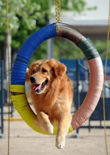
How to train a Golden Retriever with kindness.
By Sally Gutteridge | Breeds , Posts , Training
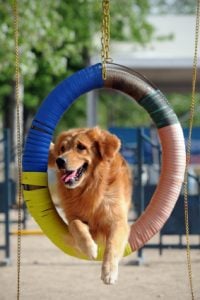 The Golden Retriever.
The Golden Retriever.
The Golden retriever. A wonderful big bear of a dog with the heart of a lion. A sturdy breed of dog that is a favorite as a family pet. Generally trustworthy, the golden is a happy and unquestioning dog. Many fans of this breed have multiple golden retrievers in their households.
A visitor to any home containing a golden retriever will receive a warm welcome from the dog. Usually, alongside the offer of a carried toy or borrowed item of footwear.
Healthy and happy.
A well and responsibly bred retriever will be a healthy and happy dog. Health risks are predominantly arthritis, hip dysplasia and the joint pressure of weight gain. Alongside others in the retriever group the golden enjoys his food. Working out how to train a golden retriever should not take you far passed the dog biscuit cupboard.
Originally bred for retrieval of game during shooting activity. The versatile and friendly nature of the golden has led to it being trained in many roles. Dogs of this breed are employed as guide dogs for blind people and assistance dogs for people with other disabilities. Police and military also often employ golden retrievers as search and detection dogs.
In comparison to some other working breeds the golden retriever will need less mental stimulation. Not because he is any less intelligent, as he certainly isn’t but because he is a steady and content dog that is equally happy to learn or relax. Good with other dogs, the golden retriever enjoys canine interaction.
Because he is bred to travel long distances on foot to fetch and carry injured game birds, the golden retriever will need a lot of exercise.
Researching how to train a golden retriever will show that this dog will respond well to reward based dog training techniques. Your golden is not overly complicated and is intelligent enough to figure out that it is to his benefit to repeat any behavior that is reinforced by a food reward.
How to train your golden retriever with clicker training
Tune your dog into the sound of the clicker. Your aim is to ensure that your golden looks to you for a food reward every time he hears a click. You can do this easily by introducing the sound and promptly following it with a treat multiple times over two to three ten minute dog training sessions.
Test the effectiveness of the click sound by waiting until the dog is looking away from you, and then pressing the clicker. If he looks at you immediately for a treat, then your dog is tuned into the sound. If little attention is paid to the click then you will need to continue the tuning in process.
Once the click is properly conditioned, you can use it to encourage your golden to repeat any behavior that you would like it to regularly offer. You can research how to train your golden retriever with a clicker and positive reinforcement .You will find many tricks that you can teach your dog.
The main thing to remember when deciding how to train your golden retriever is that a click should always result in a treat. Regardless of which behavior you may have reinforced with the sound.
Resource guarding
Resource guarding and possession of food items or other objects should never be directly challenged. Teach your dog to swap any resource from an early age and never place a lot of value on any one item. Confrontation or punishment is not how to train a golden retriever with success. Positive reinforcement and reward is essential when training your dog.
Bite inhibition
Bite inhibition should be taught to every puppy. The mother dog will allow her puppies to mouth her in play and interaction but will correct with a yelp or nip if the bite from her young is too hard. A dog with low bite inhibition does not realize the difference in the severity of a bite. Low bite inhibition means that a biting dog will bite hard. Researching how to train a golden retriever bite inhibition is a must with any new puppy.
Motivation and reward
A pocket of treats and a teddy bear with a squeak will probably ensure the most effective results when working out how to train a golden retriever. This delightful breed of dog will do anything for a biscuit and an extra ear rub.

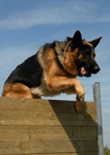
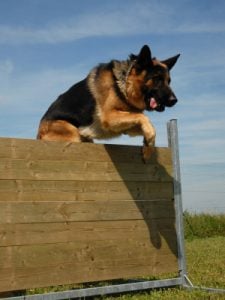 German Shepherd Dog
German Shepherd Dog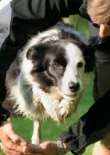
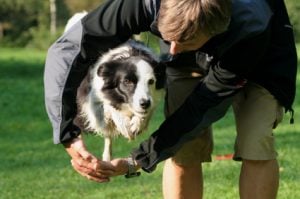 The Border collie
The Border collie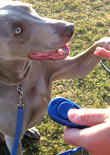
 Today, clickertraining is used as a popular, effective, and gentle training method for dogs. However, operant conditioning – the process of training any animal with a clicking mechanism – has been used as a positive reinforcement training tool since World War II by B.F. Skinner.1
Today, clickertraining is used as a popular, effective, and gentle training method for dogs. However, operant conditioning – the process of training any animal with a clicking mechanism – has been used as a positive reinforcement training tool since World War II by B.F. Skinner.1
 There are a number of different ways to approach training your puppy. If you have already tried harsher methods to manage behavior, like choke chains or shock collars, you may have seen a small degree of success. But you may have also noticed that your dog became frightened, anxious, and even angry during the training sessions.
There are a number of different ways to approach training your puppy. If you have already tried harsher methods to manage behavior, like choke chains or shock collars, you may have seen a small degree of success. But you may have also noticed that your dog became frightened, anxious, and even angry during the training sessions.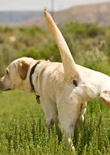
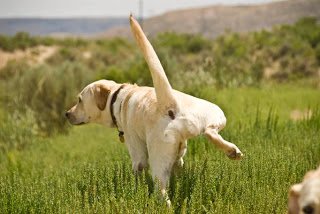
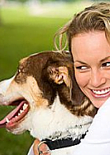
 Obedience training can sometimes be overwhelming when you get a new dog. Most people think that they can train their dog themselves and some are successful while others struggle. But in reality, everyone can have a well behaved and loving family dog in only 8 short weeks.
Obedience training can sometimes be overwhelming when you get a new dog. Most people think that they can train their dog themselves and some are successful while others struggle. But in reality, everyone can have a well behaved and loving family dog in only 8 short weeks.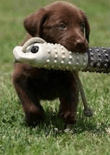
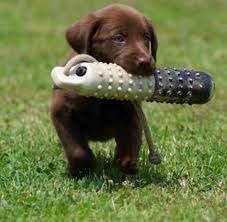 If you have just brought a new puppy home for the first time, it may be tempting to cuddle, spoil, and shower your adorable puppy with affection. But just as important as love and affection, is taking the time to train your puppy from a young age so that he can learn good behaviors that will stick with him for the rest of his life.
If you have just brought a new puppy home for the first time, it may be tempting to cuddle, spoil, and shower your adorable puppy with affection. But just as important as love and affection, is taking the time to train your puppy from a young age so that he can learn good behaviors that will stick with him for the rest of his life.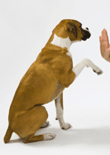
 The best dog training tactic to use with your puppy or adult dog is positive reinforcement and motivation. Once your dog begins to understand that he will be rewarded for obedience and good behavior, he will instinctively want to please you to earn praise or another treat.
The best dog training tactic to use with your puppy or adult dog is positive reinforcement and motivation. Once your dog begins to understand that he will be rewarded for obedience and good behavior, he will instinctively want to please you to earn praise or another treat.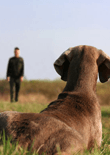
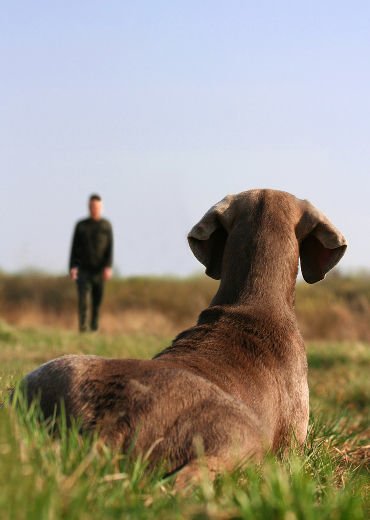 Formal obedience training for dogs normally occurs in a class or with a private trainer in a one-on-one setting. Obedience training for dogs begins with very basic obedience training, including teaching the dog to respond to such common commands as “sit”, “come”, “down”, and “stay”.
Formal obedience training for dogs normally occurs in a class or with a private trainer in a one-on-one setting. Obedience training for dogs begins with very basic obedience training, including teaching the dog to respond to such common commands as “sit”, “come”, “down”, and “stay”.